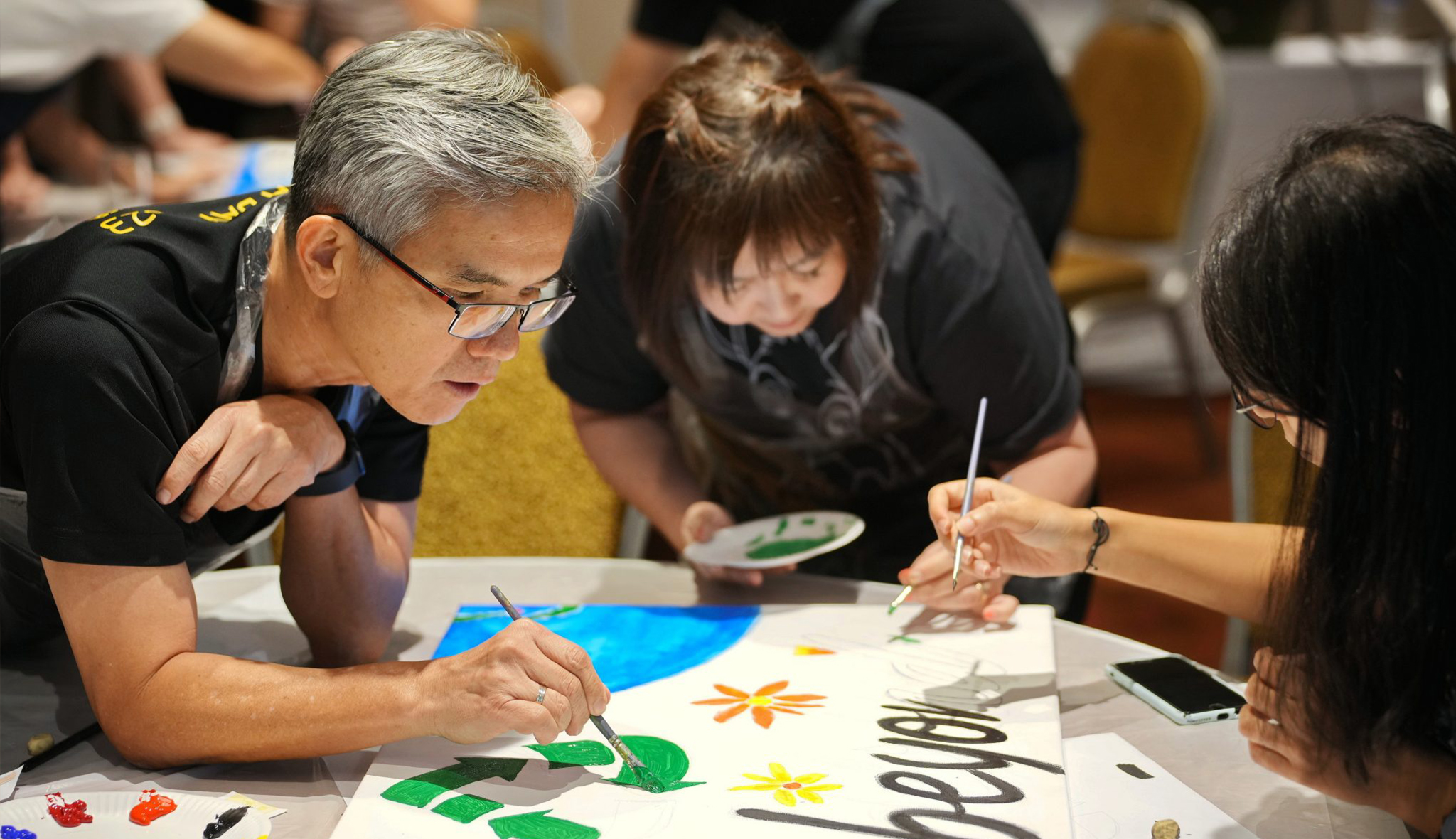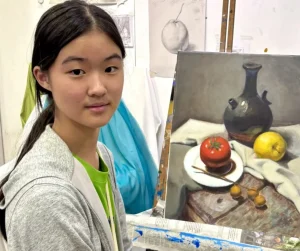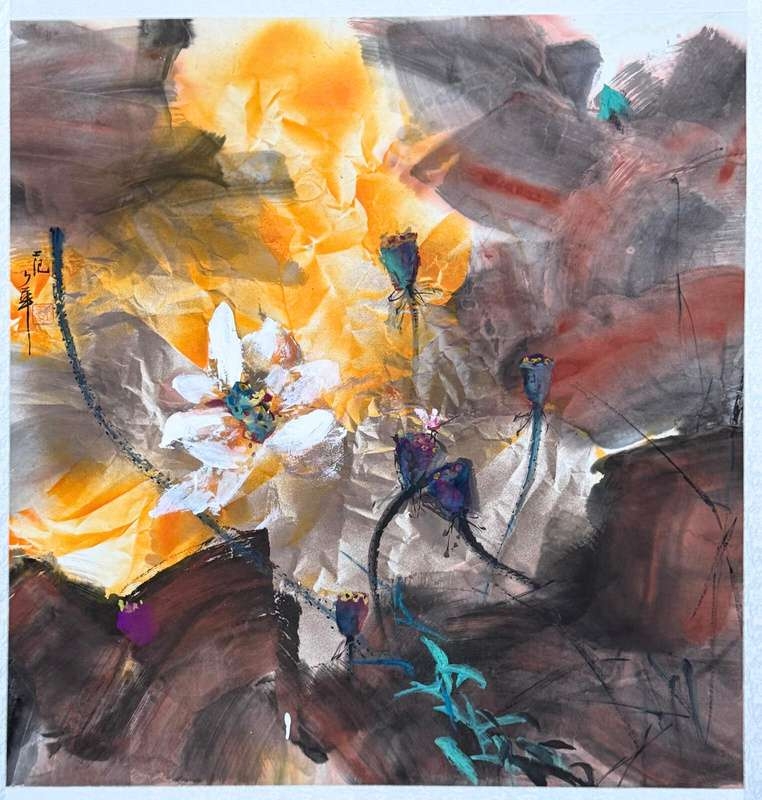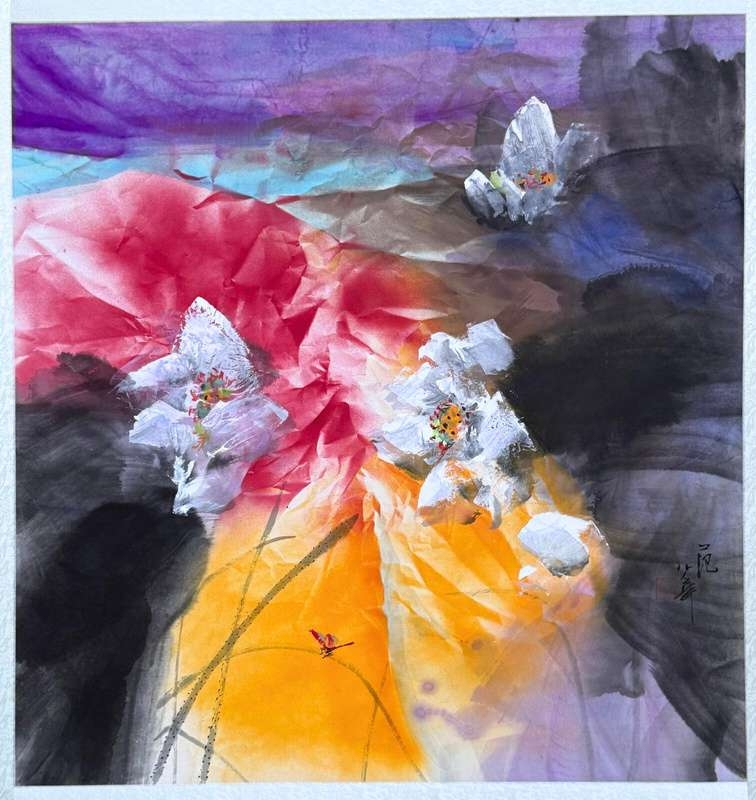Acrylic Painting on Canvas Team Bonding Art Jamming Singapore Visual Arts Centre
























Yeo Hoe Koon
Oil on Canvas
64 x 89.5 cm
Price Range: $16,000 - $20,000

Yeo Hoe Koon
Oil on Canvas
101 x 123 cm
Price Range: $26,000 - $32,000

Chen Wen Hsi
Chinese Ink and Color on Paper
50 x 54cm
Price Range: SGD $42,000 - $50,000

Cheong Soo Pieng
Red Tone
61 x 91.5cm
Price Range: SGD $108,000 - $138,000

Cheong Soo Pieng
Abstract Landscape
50 x 61cm
Price Range: SGD $95,000 -$128,000

Fan Shao Hua
Chinese Ink and Colour on Paper
100 x 100cm
Price Range: SGD $9,800 - $14,800

Fan Shao Hua
Chinese Ink and Colour on Paper
100 x 100cm
Price Range: SGD $8,800 - $13,800
Singapore Visual Arts Centre takes your children on a journey of Chinese Traditional Art.
Here, ink and brushes bring life into paper, every stroke tells a different story
Singapore Visual Arts Centre welcomes every young mind
To peer at the century-year-old civilisation through the Four Treasures of the Study

What are the benefits of learning Chinese Calligraphy?


Learning Chinese calligraphy benefits children a lot, with the most significant being their exposure to traditional Chinese culture. Calligraphy is an essential part of Chinese traditional culture. By learning calligraphy, children understand the evolution and development of Chinese characters, experience the charm of traditional Chinese culture, and thus promote the inheritance and development of traditional culture.

For children’s self-development, learning calligraphy can enhance their concentration. Ink calligraphy requires meticulous movements and a focused attitude. Through practicing calligraphy, children cultivate concentration and patience, improving their ability to focus attention. Furthermore, practicing calligraphy can also promote children’s hand-eye coordination. Calligraphy is an art form that requires fine hand movements. By writing Chinese characters and practicing strokes, children can promote the development of their hand-eye coordination skills. Children learning calligraphy can also stimulate their interest and creativity. Children’s interest and enthusiasm for calligraphy can be sparked while being encouraged to create their own calligraphy works with their imagination and creativity.

Learning calligraphy can also help children develop artistry and appreciation. Through learning calligraphy, children cultivate their perception of beauty, enhance their aesthetic level, and strengthen appreciation and understanding of art. Additionally, learning calligraphy can enhance their emotional regulation abilities. Calligraphy is a process of creation. Through writing and brushwork, children can express their emotions and feelings, thereby achieving emotional regulation and release. Finally, calligraphy learning can boost children’s confidence. Through continuous practice and improvement, children can gradually master calligraphy skills, enhance their writing proficiency, and thus strengthen their confidence and self-esteem.

How can children learn calligraphy well?
First of all, children need to master the correct postures and strokes. We start with the sitting posture, pen holding, and basic stroke order, ensuring that children develop good calligraphy habits. Secondly, children need to increase their recognition of Chinese characters to excel in calligraphy. Starting with simple strokes such as horizontal, vertical, left-falling, and right-falling strokes, children grasp the structure of Chinese characters. They are progressively being introduced to more characters.

Our Chinese Ink Art teacher, Mr Ma Shuang Lu guiding our Chinese Ink Painting student Chinese Calligraphy

Developing good calligraphy skills also involves imitation. Having children to imitate outstanding calligraphic works enables them to learn from the styles and techniques of predecessors. Therefore, we choose some simple and understandable works in seal script or regular script for children to practice. Last but not least, learning calligraphy requires patience and perseverance. Learning calligraphy is a continuous process, and we encourage children to persist on this path without giving up easily. Hence, setting small goals and rewards can motivate them to persist in practicing.

Kids Chinese Calligraphy & Ink Painting Course is now enrolling!

Address:
10 Penang Road, #01-02 Dhoby Ghaut Green,
Singapore 238469
Exit from Dhoby Ghaut MRT Station Exit B and turn left, we are there in 30m!

Address:
AZ@Paya Lebar, 140 Paya Lebar Road, #03-04,
Singapore 409105
Exit from Macpherson MRT Station Exit A and turn left, we are right across the road, 1 minute walk away!
Click and get to our WhatsApp
Embark on a captivating journey into the vibrant world of digital art! Our Foundation in Digital Art workshop invites budding creatives aged nine and above to unleash their imagination and hone their artistic skills in a dynamic, supportive environment. From mastering basic digital tools to crafting mesmerizing digital masterpieces, children will explore a spectrum of techniques guided by seasoned mentors. Through hands-on activities and interactive sessions, participants will discover the endless possibilities of digital expression while fostering creativity and critical thinking. Join us for an exhilarating adventure where young artists transform ideas into stunning visual realities, igniting a passion for digital art
In the Batik Introduction Handkerchief Painting workshop, participants will learn the traditional art of batik, a wax-resist dyeing technique originating from Indonesia. The workshop begins with a brief history and overview of batik, highlighting its cultural significance and various techniques. Participants will then observe a demonstration of applying wax with tjanting tools and dyeing the fabric. Following the demonstration, each participant will design and create their own batik handkerchief, applying wax to create patterns and then dyeing their fabric. The workshop concludes with a group discussion, allowing participants to share their creations and reflect on their learning experience.